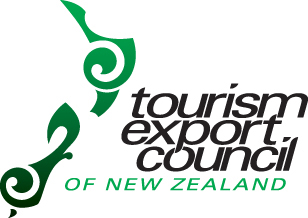NAU MAI MAGAZINE July 2013
Business first then culture for successful Māori tourism operators
For Māori tourism businesses to succeed they need to focus on business fundamentals before the cultural dimension, says Tourism Export Council chief executive Lesley Immink. “You need to put Māori culture to the side when you start a business, and look at it commercially, and at what business skills you need,” Lesley says.
“In the past there was too much emphasis on being an authentic Māori experience, rather than concentrating right at the start on business skills. That’s why we have had very few Māori start ups grow into larger operators as while the cultural intention was evident, some business skills have been lacking. The focus should be on defining the business components of your product and weaving tikanga through it from all points of communication to the end delivery.” This is what creates a unique point of difference from other mainstream product.
Start up operators need to invest in understanding business basics, from understanding gst to domestic/international marketing, product development and pricing. To do this they need a plan to keep going until the business is self sustaining and this includes membership to the appropriate organizations like the Tourism Export Council and the Tourism Industry Association.
“As a business mentor, when I’m working with couples I say that one of them has to keep their day job until the business can pay them both a realistic wage,” Lesley says. High profile Māori tourism success stories like Whale Watch, the Tamaki Māori Village, Mitai Māori Village, Te Puia, New Zealand Māori Arts and Crafts Institute, Hell’s Gate, and Te Hana Te Ao Marama are now all sustainable businesses with an export ready product, she says, but started one day and one tour at a time.
Lesley, who has affiliations with Tūwharetoa and Ngāti Apa, has 30 years experience in the tourism industry. She has won two New Zealand Tourism Awards, and successfully started, and for 14 years ran, an inbound tour company specialising in the youth and education markets, New Zealand Educational Tours.
The Tourism Export Council (formerly the Inbound Tourism Operators Council) works to bring product suppliers together with New Zealand inbound tour operators to grow New Zealand as an international tourism destination.
Lesley sees having successful Māori tourism experiences as critical to marketing New Zealand as an international tourism destination.
“My vision is for Māori to be a primary motivation for the majority of our overseas visitors coming to New Zealand.” At the moment the key motivator is our stunning scenery and often it is not until visitors arrive in New Zealand that they appreciate that the Maori culture is something quite unique and special. She says changes in the international market place means that her vision is realistic.
“The customer is changing. After doing the big icon countries of the world the visitor will turn their attention to countries that are environmentally and culturally sustainable. National tourism organisations like Tourism Australia and Tourism New Zealand are starting to leverage off their indigenous cultures. We are definitely ahead of the Australians in terms of the maturity and professionalism of our Maori product and in fact several Maori are now advising Indigenous groups in Australia.” With Tourism New Zealand seeing Māori culture as a point of difference for New Zealand, the next challenge is to make sure that more Māori tourism business operators become export ready, she says.
A positive development is that Maori tourism businesses are maturing and more and more young Māori are gaining tertiary business qualifications. “They want to succeed and are going back into the family business with a whole set of business skills.”
When developing new tourism products operators need to consider how New Zealand sells itself overseas, Lesley says. Traditionally, the North Island is marketed internationally as Māori, geothermal and citylife products while the South Island is about scenery, nature and conservation. Maori operators need to appreciate that while international visitors do want to experience Maori product, they don’t necessarily want to do it at every destination she says. It is like coming to New Zealand because they want to see the home of AJ Hackett Bungy and do one or two jumps, but they don’t want to do it in every available destination. There needs to be strong differentiation between the range of Maori product for a visitor to experience culture activities in different destinations.
A change in the market that is creating opportunities for smaller operators is the increase in Free Independent Travellers (FITs). Where once ITOs needed relationships with 100 key operators to meet the needs of inbound groups, the more diverse requirements of the FITs means that they now need to work with 2000 operators, she says.
“The rise of the FIT visitor has real benefits for smaller Māori operators,” she says. To capitalise on this opportunity, the Tourism Export Council working with Air New Zealand, Tourism Auckland, and New Zealand Māori Tourism, organised an event that brought 20 Māori tourism business and 25 inbound operators together in Auckland in September 2012.
“The event was highly successful. Some Māori operators wrote new business, others established relationships, and others identified that they needed to do more to make their product export ready, Lesley says. Inbound operators were pleasantly surprised with the range of new product and keen to learn of more.” Because of the success of the event, a similar one is now being planned for 12 September 2013.
Ends
